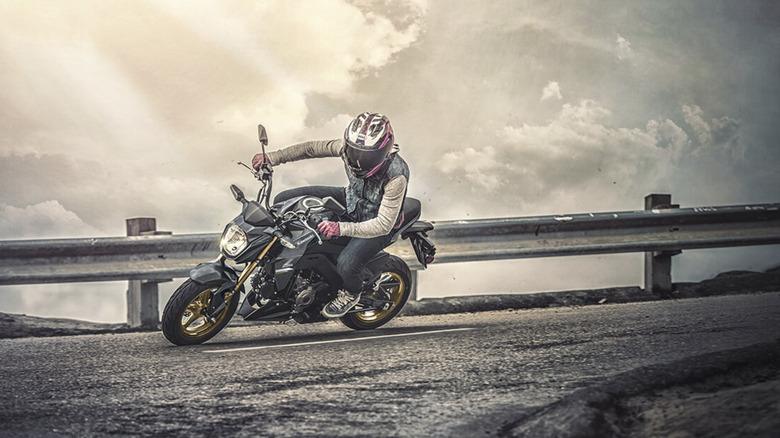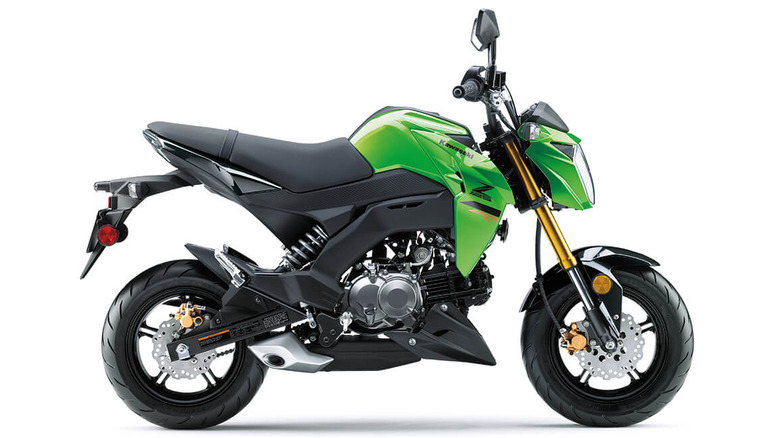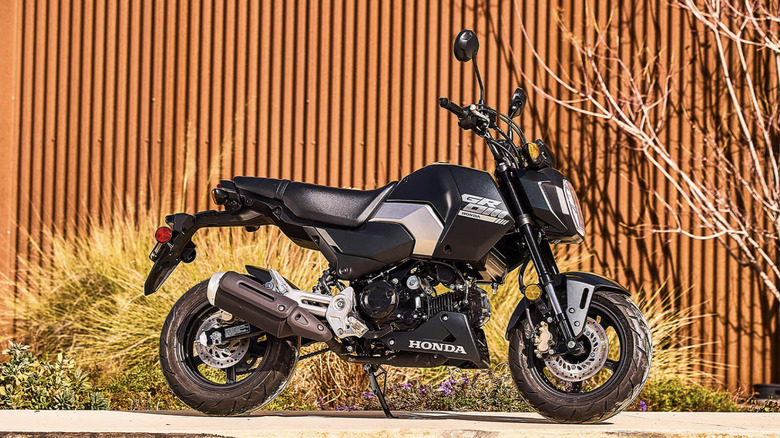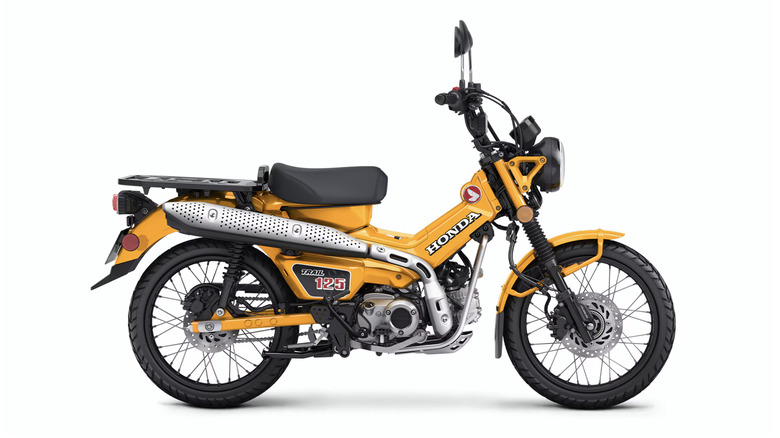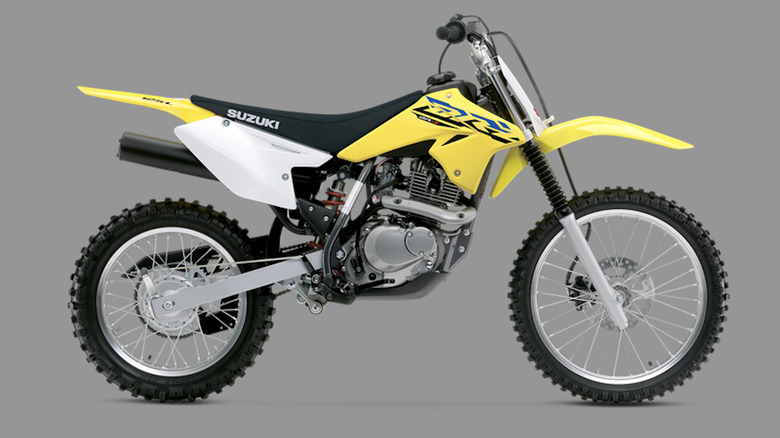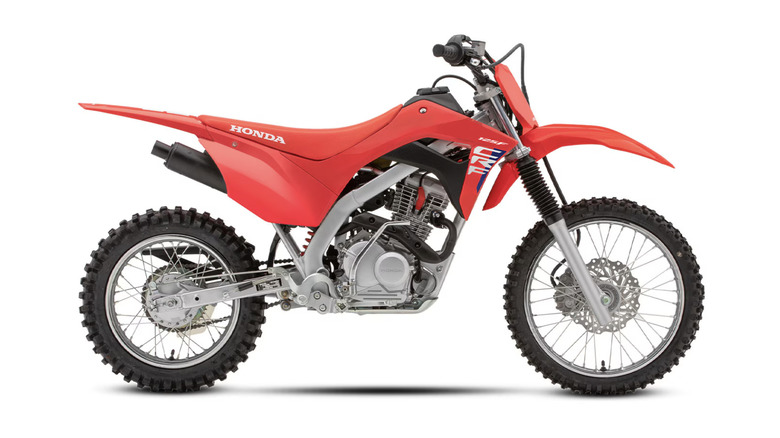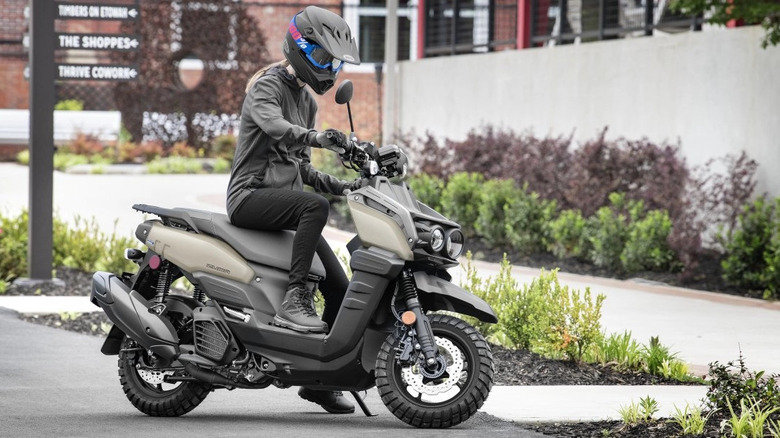6 Of The Most Affordable 125cc Motorcycles For Beginners
If you're a beginner rider who's looking for inexpensive, two-wheeled transportation, there are several motorcycles available that fit the bill. There are even a few entry-level dirt bikes that new riders may gravitate towards. But how do you pick the size of your motorcycle, especially as a beginner? And what's a good price for a new 125cc bike?
Motorcycles are typically categorized by the size of their engine. Generally, the smaller the bike, the smaller the engine, and the less expensive the bike will be. Smaller bikes are typically lighter and less powerful, too, making them easier to manage in most scenarios. There are exceptions to these rules of course, but it's a good framework for starting the search for your first bike.
Most motorcycles and scooters that provide less than 250ccs of engine displacement are a bit underpowered for highway riding. If you're looking to do a bit of highway riding on your first bike, you may want to start by looking at affordable 300cc bikes. If you're looking to learn (and ride) in the city, or even in the dirt, 125cc motorcycles are a great place to start. These bikes tend to have relatively low top speeds, making them potentially less entertaining to veteran riders but more approachable for new riders due to their low prices.
Kawasaki Z125 Pro
Small and quirky, the Kawasaki Z125 has all the hallmarks of a desirable mini bike. The Z125 starts at just $3,649 (plus $255 destination fee), and it has some impressive stats. The 2.0-gallon fuel tank is larger than most of the 1.0-1.6-gallon tanks that are available in the class, which will get you a bit further between fill-ups. The styling is very reminiscent of larger Kawasaki street-fighter bikes, and it's available in three different color schemes, including one that uses Kawasaki's iconic green paint on the fairings and headlight cowl. The Z125 also comes with a digital LCD screen for the speedometer and fuel gauge, along with a large, easily readable tachometer.
Mini bikes like the Z125 often have a hard time breaching 60-65 miles per hour, which may sound like a drawback, but for beginner riders, it can actually be a benefit. Keeping your low-displacement motorcycle on the street means that you'll have to focus on slow-speed maneuvers — things like squeezing into tight parking spots, slow-speed U-turns, and even a bit of lane-filtering (if you live in a state where it's legal). Those skills will be extremely valuable on larger, more powerful bikes but much easier to learn and master on something small, lightweight, and easy to manage, like the Z125.
Honda Grom
There are several Honda products with 125cc engines, nearly all of which are affordable and good for beginners. But one of the best candidates for beginner riders who want something small is the Honda Grom. It starts at just $3,599 (plus $300 destination), and it's geared a bit more towards urban environments. The Grom is powered by a 124cc air-cooled single-cylinder four-stroke engine that can get it up to a top speed of around 55 mph. We wouldn't recommend taking it on the highway, but that's plenty fast enough for city streets.
The Grom is relatively lightweight, checking in at just around 224 pounds (with a full tank of fuel), and it has an astonishingly high fuel economy estimate from Honda of 166.5 miles per gallon. A bike as small as the Grom is relatively easy to transport, too. It's light enough to easily push up a motorcycle ramp, so taking it with you on local trips in the back of your pickup truck or mounted to a tow-hitch attachment should be a breeze.
Honda Trail 125
If you're not a fan of the Grom's styling, there are several other 125cc motorcycles available in Honda's MiniMOTO lineup. The Trail 125 ($4,099 plus $300 destination) should definitely be on your shopping list for small, affordable bikes, especially if you like bikes that feel playful and fun before you ever touch the throttle. Even though it is a few hundred dollars more than the standard Grom, the Trail 125 has a good list of standard equipment. It includes a no-clutch semi-automatic transmission, front-wheel ABS, and fuel injection. It also has a small luggage rack standard, which is excellent for keeping gear off your back while riding.
With the semi-automatic transmission, you get the motorcycle experience of shifting a lever with your left foot but no requirement to operate a clutch on the handlebars, which might be more approachable for new riders who aren't familiar with manual transmissions yet. The Super Cub C125 ($3,899 plus $300 destination) is another great MiniMOTO option, with a ton of heritage and a similar cool factor from the moment you park it in your driveway.
Suzuki DR-Z125L
Street riding has its appeal, but some beginner riders may want to start by learning on dirt. Bikes like the Suzuki DR-Z125L ($3,599 plus destination) are a good starting point for inexpensive dirt bikes, especially for teenagers learning to ride. Suzuki classifies it as a youth bike suited for young adults learning on trails. There's no traffic, no stop lights, and you get the added benefit of enjoying nature while you ride. Some enthusiasts will even go as far as to recommend dirt riding as the first experience every new rider should have.
Dirt bikes tend to be a bit less fragile, so if you accidentally tip one over in the dirt, the damage might not be as bad as it would be if you dropped your motorcycle on asphalt. The DR-Z125L is powered by a 124cc single-cylinder engine and it has a relatively low seat height for a dirt bike at just 32.0 inches. Also, according to Suzuki, it only weighs 196 pounds — so it should be relatively easy to manage if it tips over in the dirt.
Honda CRF125F
Like with the DR-Z125L, the Honda CRF125 offers the benefits of dirt riding to beginners at a low price. Managing a bike on loose surfaces like dirt or sand can help teach new rider skills like body position and throttle control, all while avoiding the distractions of street riding. Unlike the DR-Z, however, which uses a carburetor and a kick starter, the CRF uses fuel injection and an electric starter. There are two options for sizes with the CRF125 — the standard and the "Big Wheel" for taller riders, making it a bit more versatile.
All that equipment and a starting price of $3,499 (plus destination) make the CRF pretty appealing for beginners (the Big Wheel is slightly more expensive with a starting price of $3,899 plus destination). Beginner riders with a desire for some dirt should also look at the Kawasaki KLR140 ($3,699 plus destination), even though it's slightly above the 125cc size limit for this list.
Yamaha Zuma 125
Technically, Yamaha classifies the Zuma 125 as a scooter (not a fully-fledged motorcycle), and that's exactly what it is, but we've still decided to include it on this list. It has all the typical scooter aesthetic cues, so nobody at your local bike night will mistake it for a motorcycle, but it's much more approachable for beginner riders. Like most scooters, the Zuma 125 uses an automatic transmission, so hopping on and going for a ride doesn't require learning how to shift a manual transmission. It comes with both a center stand and a side stand, so parking the Zuma and working on it should be relatively easy. The big under-seat storage compartment is large enough for helmet storage, while the front storage compartment provides a USB charging port — a big benefit if you're commuting to work on your Zuma or have multiple stops and need to keep your phone charged.
The Zuma is relatively inexpensive, too, checking in at just $3,799 (plus $450 destination). With a 1.6-gallon fuel tank and a Yamaha-estimated fuel economy of 101 miles per gallon, going over 100 miles on a single fuel stop should be a relatively simple task. The Zuma isn't going to wow you with its acceleration or sheer power, but it might just be the right fit for someone who's looking to transition to two wheels.
